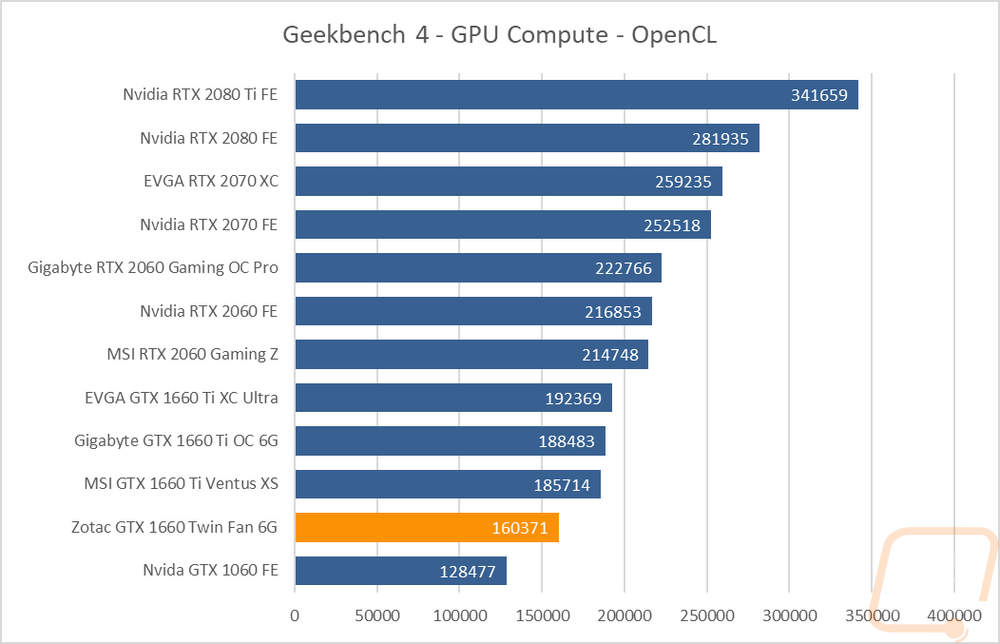Compute Benchmarks
Now some people like to game and then use the same PC for work or a better example would be gamers who want to record or stream. There are situations where gaming isn’t the only thing you might use your new GPU for and to take a look at compute performance I run a few tests. The first one is using Passmark’s Performance Test 9 where I run the GPU Compute test. It is a general synthetic test but it does give us an overall look. I was surprised to see the GTX 1060 up ahead in this one with the GTX 1660 sitting between the RX 580 and RX 590.
 Next and I think my favorite test is Blender which is an open source 3D modeling software that is extremely popular. For this test, I use the base benchmark but I have it updated with a mid-January build to add in support for the RTX cards which isn’t available with the base benchmark. It is a timed benchmark rendering two different situations and the GTX 1660 did well here. It slipped past the GTX 1660 Ti from MSI which clearly had problems and is significantly faster than even the GTX 1070 Ti let alone the cards closer to this in a price range like the GTX 1060 which takes almost twice as long.
Next and I think my favorite test is Blender which is an open source 3D modeling software that is extremely popular. For this test, I use the base benchmark but I have it updated with a mid-January build to add in support for the RTX cards which isn’t available with the base benchmark. It is a timed benchmark rendering two different situations and the GTX 1660 did well here. It slipped past the GTX 1660 Ti from MSI which clearly had problems and is significantly faster than even the GTX 1070 Ti let alone the cards closer to this in a price range like the GTX 1060 which takes almost twice as long.

The next test was Basemark GPU where I ran their test in both DX12 and OpenGL and you can really see the performance gap here between the GTX 1660 and the GTX 1060.

Geekbench 4 is similar with their GPU Compute benchmark running OpenCL and the GTX 1660 finds a happy medium between the GTX 1660 Ti and the GTX 1060 with it a little closer on the GTX 1660 Ti side than the GTX 1060.



